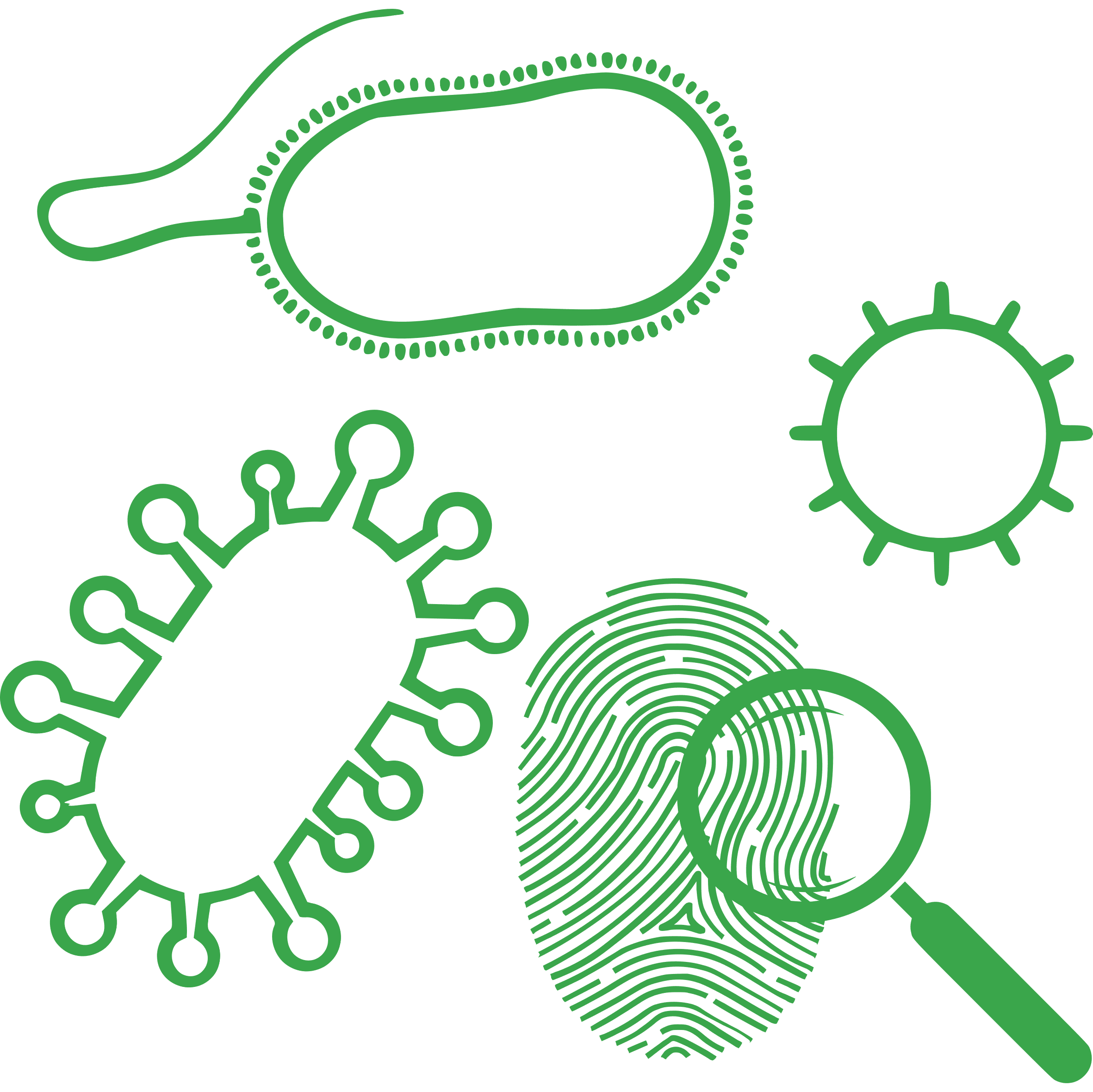
Microbial marker gene analysis
Microbial marker gene analysis (MGA) provides precise microbial community profiling, prioritizing high-level taxonomic classifications and relative abundance estimations. DNA long-read Oxford Nanopore Technologies (ONT) sequencing allows for comprehensive identification of bacteria, archaea, fungi, and eukaryotic compositions via marker genes like16S/18S rRNA and ITS gene sequencing.
Our optimized workflows target 16S rRNA variable regions V1-V8 for bacteria or V4-V9 for archaea, and with the possiblity to utilize cross-domain primers for detecting archaea, bacteria, and eukaryotes through 16S/18S variable regions V4-V8. Microbial organisms are classified against cutting-edge taxonomic databases like MiDAS, SILVA, and HOMD, tailored to the sample type, with the standard analysis potentially extending classification to the species level. Alternative and custom databases can easily be accommodated.
An MGA project includes access to DNASense’s App, allowing for interactive exploration and visualization of the extensive results obtained. Key features include results filtering, multivariate statistics, and customizable visualization.
MGA is a cost-effective and fast analysis e.g. for continuous process monitoring, and also usable as a valuable pre-screening and supplementary tool for large-scale projects involving higher-order analyses like metagenomics. Highly important, the use of long-read DNA sequencing for MGA combined with efficient PCR primers shows excellent agreement between the gold-standard PCR-free and native DNA metagenomics using ONT and results from MGA. I.e. taxonomic classification biases from short-read approaches and less efficient short-read-compatible PCR primers are no longer an issue.
Please, contact DNASense for a pre-project online meeting to customize the analysis strategy with a product specialist.

We have successfully extracted DNA from various low- and high-biomass sample matrices. Our customizable DNA extraction workflows, employing both manual and automatic methods, cater to the most challenging sample types. These workflows minimize extraction biases in complex communities, as demonstrated by Albertsen et al. while ensuring high yield and quality (including purity and HMW DNA). Our expertise in DNA extraction ensures optimal project outcomes, complemented by state-of-the-art DNA long-read sequencing technology.
Sample matrices include, but are not limited to: prokaryotes, invertebrates, fungi, salmon, wastewater, aquacultures, soil, oil spills, marine/freshwater samples, eDNA (environmental DNA), bioreactors, tree bark, mangrove and marine sediments, pig/chicken/rat/fish entrails/feces, mining/drill sites, cow rumen, seaweed, oysters, mouthwash, tooth swaps, skin swaps, microbial-induced corrosion samples, lung tissue, colon cancer biopsies, and liver biopsies.
Standard package includes: Optional pre- and post-project meetings with a DNASense specialist, standard turnaround time (5 workweeks), DNA extraction, quality control, DNA library preparation, Oxford Nanopore (R10.4.1) long-read sequencing, relative abundance estimates and taxonomic classification, statistics and microbial community analysis presented as heatmaps and PCA plots, free access to our DNASense App..
Add-on services include but are not limited to: 3 or 7-workday turnaround time, Linear discriminant analysis Effect Size (LEfSe), and extended statistical analysis.

Overview of the microbial marker gene analysis (MGA) workflow. A) Sample total DNA is extracted from biomass, B) followed by PCR amplification of the targeted microbial marker genes, e.g., the 16S rRNA gene. C) Sequencing adapters are ligated onto PRC products, and D) the resulting DNA libraries are sequenced using the Oxford Nanopore Technologies platform. E) The obtained DNA reads are adapter-trimmed and quality-filtered, and then F) a reference-based mapping against a suitable database is used to quantify DNA read abundances and infer taxonomy for obtaining so-called operational taxonomic units (OTUs). G) Finally, OTU tables are created to connect DNA read taxonomy and observed abundances.
FAQ
How do I sample representatively from activated sludge, digester sludge or influent wastewater?
Please find a collection of sampling protocols at https://www.midasfieldguide.org/guide/protocols
How much sample should I send?
The amount of sample depends on the sample type. If you have water samples we would recommend to sample 100-1000 mL. If the water has a high density of bacteria approximately 100 mL should be fine but if the water is very low in bacterial density we would recommend to sample at least 1000 mL. Alternative to send a large volume of water you can filter the water sample on a 0.2 µm filter.
Which 16S rRNA variable gene region should I use as my target region to have sequenced?
The variable region depends on the type of sample and if you have some specific organisms you would like to target. E.g. if you are interested in nitrifying bacteria in activated sludge we would recommend to sequence the variable gene region 4 (V4 region). Also if you have both bacteria and archaea in your sample you could have both sequenced with a modified primer set targeting the V4 region in both bacteria and archaea, however, these primers underestimate the proportion of archaea so if the full diversity of archaea is of interest we would recommend using specific archaea primers targeting the V3-V5 region.
I have a specific gene region I would like to have sequenced do you offer this?
Yes, we offer to sequence the gene region of your choice. If we do not have the specific primers in-house, we offer to purchase them on our own expense.
Do you offer to sequence functional genes?
Yes, we also offer to sequence any functional gene of interest. Contact our experienced staff to discuss your project in detail.
I have a custom database, can you use this for taxonomic classification?
Yes, is possible to use a custom database. Contact our experienced staff to discuss your project in detail.
Can I achieve taxonomic classification to species level?
This is highly dependent on not only the variable region of choice, but also the reference database. For OTUs defined at the 97% identity threshold and with a good reference database, genus-level resolution can be expected. For higher resolution (species), an ASV workflow can be pursued. However, taxonomic classification is still limited by the reference database (i.e. species-level classification cannot be achieved for a genus-level reference database).











